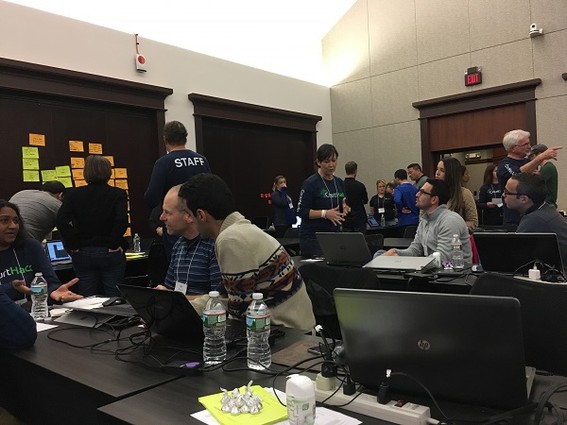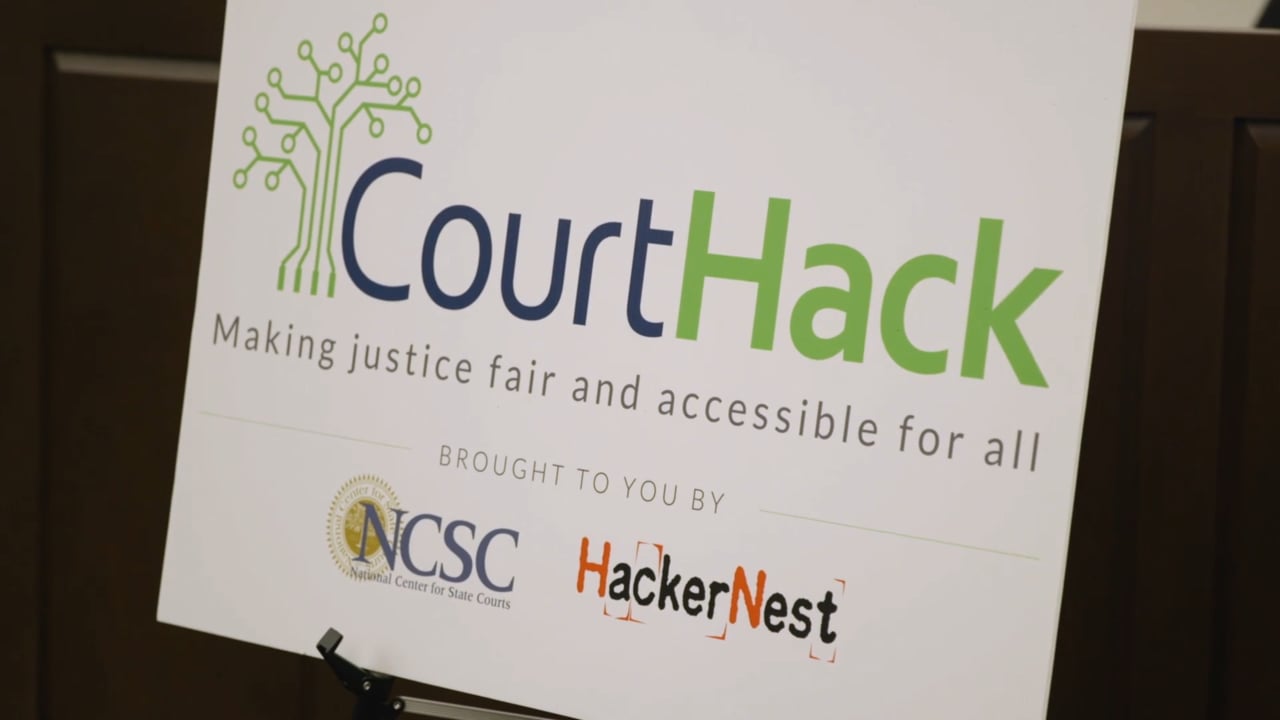At CourtHack 2017, Hackers Present Solutions For Real-World Justice System Problems

The second annual CourtHack took place in New Brunswick on April 22-23, supported by the National Center for State Courts (Williamsburg, Va.) and HackerNest (Toronto, Canada). The hackathon, which is held in a different state each year, was dedicated to “improving access to justice for all Americans.”
Court and legal experts provided extensive mentorship and support to more than 100 hackers and entrepreneurs who gathered at the New Jersey Law Center, where they built tools and solutions that addressed serious challenges endemic to court systems and experiences.
NJTechWeekly.com stopped by the hackathon on April 23 and met some of the hackers, judges and organizers who had come to the event from all over the country. The hackers had been given some challenge sets ahead of time, and were judged on impact, practicality, creativity and technical innovation.

Before the presentations began, one of the organizers had said, “We drilled it into the teams: Focus on how you are helping people. Don’t worry so much about the challenge set. Don’t build for the prize. Build for the person” who will be benefiting from the solution.
Most hackers attempted to address problems for people who are arrested for minor offenses, but find themselves unable to pay the fines, and thus wind up with bigger debts or even jail time. Sometimes they are fired from their jobs because they had to take off time from work to dispute an issue. And many don’t understand the paperwork that comes with orders to appear in court or other summonses.
The winning team, Team Tiger, presented a project called “eBenchCard – Defendant’s Hope for Justice.” Team members Vijay Deep and Akbar Farook created an electronic app (both Web and mobile) that allows defendants to inform a judicial officer of their inability to pay legal financial obligations (LFO), and thereby get alternative options to their LFO.
“According to the Task Force on Fair Justice for All, there are approximately 10 million people who owe $50 billion in legal fines and obligations in the country,” the team said in its submission statement.
“A significant number of them are behind bars and incarcerated because they did not have the ability to pay their dues and have defaulted on their legal financial obligation. This has caused a lot of issues around procedural fairness across the country. This tool is geared at alleviating this issue for the citizens as well as providing a tool for the judges on the bench to determine the ability to pay in a much more efficient and faster manner.”
Second place went to Team Rock Solid. Team members Yanira Rivera, Eduardo Diaz and Alexis Pérez created “Fairness Center,” a solution that enables people to apply for alternative sanctions online, and helps courts determine ability to pay in order to provide alternative sanctions.

Another team created a bot that explains the nature of a summons, helps the user find legal help in dealing with the summons, and translates a summons into the user’s native language.
Prizes were substantial. The first-place winners received $5,000 in cash, $1,000 plus transportation and accommodations in San Francisco for two members to work on their projects with One Legal this July, a trip to demo the solution at the NCSC’s Court Technology Conference in Salt Lake City in September, and dinner with the chief justice of the New Jersey Supreme Court.
Shaharris Beh, HackerNest CEO, explained that organization’s involvement in the hackathon. “The National Center for State Courts came to us and asked us if we wanted to do a hackathon for the U.S. justice system. Immediately I said, ‘yes, we are in!’ Let’s do it. It could help so many people.’”
From there, the partnership blossomed. “The very first CourtHack we did was in 2016 in Salt Lake City at the Utah Supreme Court’s Scott M. Matheson Courthouse. It was great.”
Beh said that he expects the hackathon to continue for years to come. “I think this is good, not just for the United States but governments in general. … Instead of walking around saying ‘I wished this was fixed,’ you are getting talented people together and match them up with experts who have the daily experiences day in and day out.”
He added that most hackathons don’t have this kind of mentorship the folks experienced at CourtHack, which helped the teams really understand how the courts work and the stumbling blocks to overcoming the problems. While HackersNest helped design the challenge sets for the first hackathon, the National Center for State Courts designed the sets for the one this year.
The idea was that the challenges needed to be feasible given the time constraints. “For a hackathon, you’ve only got 20 to 30 hours. You need to condense the thing you are solving. You have to find the base elemental thing. The magic of hackathons is that you have to think of the little things that need solving, and it is these little things that have huge rippling effects down the road.”


